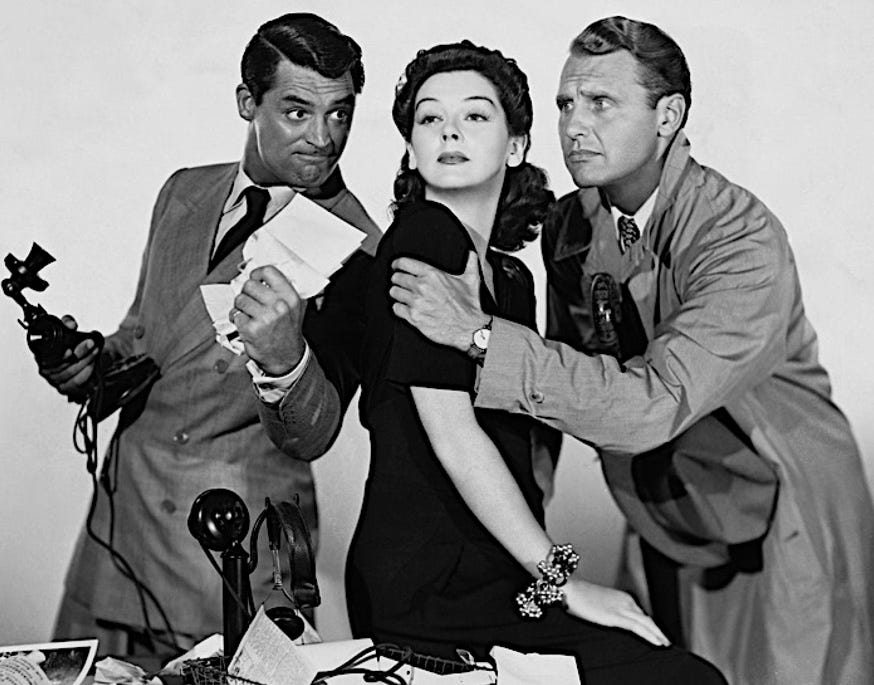The Fundamental Things Don’t Apply
Sleepless in Seattle
1993 Director: Nora Ephron
Starring: Tom Hanks, Meg Ryan, Bill Pullman
SPOILER ALERT
Romantic movies often pit a woman between two men and she must choose between them. This is the case with “Sleepless.” Annie Reed (Ryan), a Baltimore Sun reporter engaged to Walter Jackson (Pullman), hears a young boy on a radio talk show tell a psychologist that his father, Sam Baldwin (Hanks), needs a new wife. Sam, a widowed architect and recent insomniac, moves with his son, Jonah (Ross Malinger), from Chicago to Seattle to start a new life, far from the memories of his late spouse. As Annie goes to visit her family during the Christmas holidays to introduce them to Walter, she hears the program. Sam is persuaded to speak about his wife on the radio and hundreds of women send him love letters, prompting a return to the air. Becky (Rosie O’Donnell), Annie’s boss, suggests that she write an article about the program—and she goes to Seattle to “research” it.
“Sleepless” does something unusual. In the story, Annie finds herself more and more attracted to Sam, though they haven’t met, and less and less interested in Walter. Walter is sweet, charming, elegant, gets along with her family, and seems eager to please her at every turn. He is completely devoted to her. He is also very handsome, but he seems to have one flaw—he has allergies! Of course, Annie eventually finds her way to Sam’s heart and dumps Walter. I find her choice disappointing, particularly because I’ve always liked Bill Pullman.
Rom-coms such as this often force the woman to choose, and she usually picks the handsome guy. Consider, for instance, a classic film like “His Girl Friday” (1940, starring Cary Grant. “Sleepless” makes frequent references to Grant, so the comparison is apt). Here, Hildy Johnson (Rosalind Russell) visits her ex-husband, editor Walter Burns (Grant) at the newsroom of the Morning Post, and announces her engagement to Bruce (Ralph Bellamy), who seems a dull and boring guy who sells insurance. Walter imagines a dull and boring life if Hildy marries Bruce, and repeatedly tries to convince her of this. It seems to me that, in all his films, Grant always got the girl, and his male costars were never as handsome as him, making the choice easy for his female costar (and the spectator).
Now consider another classic, this time a film noir: “Laura” (1944, starring Gene Tierney). Laura (Tierney), is a gorgeous brunette in her 20s. She is smart and successful, but she owes much of her success to Waldo Lydecker (Clifton Webb). Waldo is a scrawny, conceited, and funny-looking man in his 50s who adores her and guides her in all he can. Laura dates handsome men her own age, much to Waldo’s chagrin. Without giving away the plot, I will say that Waldo does not get the girl.
In returning to “Sleepless,” I must confess that Annie’s choice surprises me. She is willing to move 3,000 miles to an unfamiliar man and location, leaving her family and job behind. How does someone take such a gigantic risk on just a feeling? It would certainly be easier to comprehend if Walter was problematic, or at least unattractive. Further, when she reveals her plan to Walter, he is kind and understanding. The man is a prince! And Annie leaves him?! Now, some will say that Sam also has great qualities and, by the way, he is the star of the film. But even so, that’s the big difference, I would say, between fact and fiction. And I believe that few women (and perhaps even fewer men) would do in real life what Annie does in the film.





